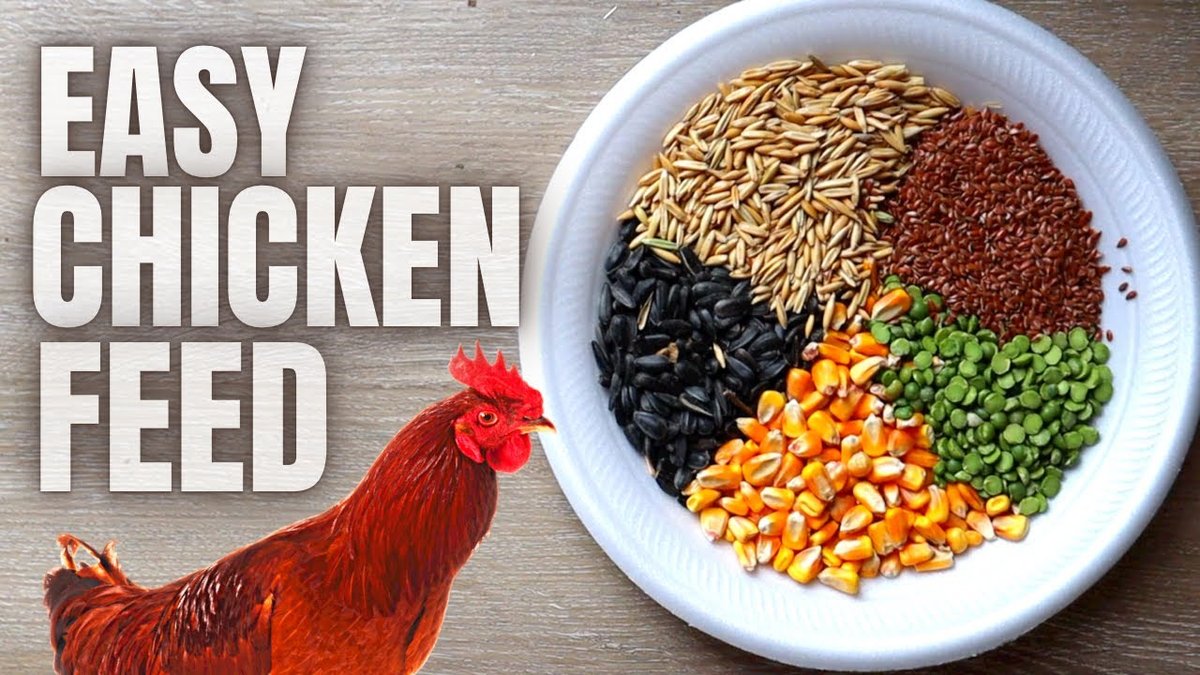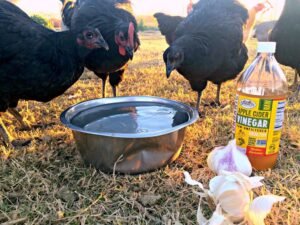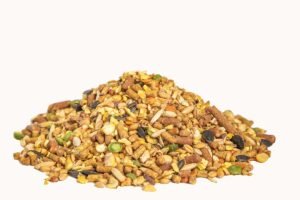Want healthier chickens and lower feed bills? Moving toward a self-sufficient lifestyle often means taking control of every aspect of your homestead, and that includes what you feed your flock. Many new chicken keepers are surprised to learn they can mix their own feed from scratch. This article is your simple, step-by-step guide to crafting a nutritious homemade chicken feed recipe for beginners, giving you control over ingredients, improving your flock’s health, and saving you money in the long run.
Why Bother Making Your Own Chicken Feed? The Pros and Cons
Is it cheaper to make your own chicken feed? Yes, making your own chicken feed can be significantly cheaper than buying pre-mixed bags, especially if you can source ingredients in bulk. While there is an initial investment in equipment, the long-term savings can be substantial. Here’s a quick look at the pros and cons to help you decide.
The Financial and Health Benefits (Pros)
- Cost Analysis: By buying whole grains and supplements in large quantities from local farms, co-ops, or agricultural suppliers, you can drastically reduce your per-pound cost. The price of a 50lb bag of commercial feed can be quite high, but the same weight of homemade feed from bulk ingredients can be significantly less expensive. You can see savings of 20-50% depending on your location and the seasonality of ingredients.
- Ingredient Control: You decide exactly what goes into your chickens’ food. This allows you to avoid low-quality fillers (like corn screenings or meat meal) and unknown additives often found in commercial feeds. You also have the freedom to choose organic or non-GMO ingredients, ensuring your flock’s diet is aligned with your personal values.
- Tailored Nutrition: A one-size-fits-all commercial feed isn’t ideal for every flock. Making your own feed allows you to adjust the recipe to perfectly match your flock’s specific nutritional requirements, whether you have fast-growing broilers, high-producing egg layers, or a mixed flock.
The Challenges (Cons)
- Time Commitment: Making your own feed requires time and effort. You’ll need to research, source ingredients, measure, and mix the feed regularly.
- Initial Investment: There can be an upfront cost for equipment like a durable digital scale, large mixing tubs, and, if you’re serious, a small grain mill or grinder.
- Learning Curve & Nutritional Balancing: It is vital to get your ratios correct to avoid nutritional deficiencies. Beginners should start with a proven, balanced recipe and gradually experiment. A poorly balanced feed can lead to health issues or reduced egg production.
Ultimately, the choice to make your own feed is a personal one. The upfront investment in time and knowledge pays off in healthier chickens and significant cost savings. Now, let’s dive into the science behind what your chickens actually need to thrive.
Understanding Chicken Nutrition: What Your Flock Truly Needs
To create a balanced feed, you must first understand the primary nutritional components that chickens need to thrive.
- Protein (16-22%): This is the most critical nutrient for growth, feather production (especially during a molt), and consistent egg-laying. Proteins are made of amino acids and are the building blocks for healthy muscles and eggs.
- Calcium (2.5-3.5% for layers): Crucial for strong, healthy eggshells and bone density. Without enough calcium, eggshells will become thin, brittle, or your hens may develop bone issues.
- Carbohydrates & Fats: The primary source of energy for your flock. These are found in whole grains like corn and oats and provide the necessary fuel for daily activity and warmth in colder months.
- Vitamins & Minerals: Essential for a strong immune system and proper bodily functions. Ingredients like kelp meal and brewer’s yeast are packed with these vital nutrients.
Nutritional Requirements by Life Stage
The nutritional needs of your chickens change significantly with their life stage.
- Chicks (0-8 weeks): They need a high-protein “starter feed” (20-22%) to support rapid growth. This feed should be a finely ground “crumble” that’s easy for them to eat.
- Pullets (8-20 weeks): These are adolescent chickens. They need a “grower feed” with slightly lower protein (16-18%) than a starter, but still no added calcium, as too much can damage their kidneys.
- Layers (20+ weeks): Once they begin laying eggs, hens need a “layer feed” with lower protein (16-18%) but a much higher calcium content (2.5-3.5%) for eggshell production.
- Broilers & Cockerels: Chickens raised for meat need a consistently high protein diet (20-22%) to promote rapid muscle and weight gain.
Knowing the needs of your flock is the first step. With that in mind, let’s explore the core ingredients you’ll be using to build their perfect diet.
The Core Ingredients for Chicken Feed: Building Your Pantry
This section will help you answer the question, “What are the ingredients for chicken feed?”. We’ll categorize the key components you’ll need to build a complete feed.
- Whole Grains (The Base): These make up the bulk of your feed and provide carbohydrates for energy.
- Cracked Corn: A high-energy, readily available grain.
- Wheat: A solid source of energy and protein.
- Oats: Excellent for gut health due to high fiber content.
- Sorghum: A great, drought-resistant grain that is a good substitute for corn in warmer climates.
- Protein Sources: These are vital for growth and egg production.
- Soybean Meal: One of the most common and effective protein sources.
- Field Peas: An excellent, natural, non-soy protein source.
- Flaxseed: Provides protein and healthy Omega-3 fatty acids, which enrich your eggs.
- Sunflower Seeds: Can chickens eat sunflower seeds? Yes, they love them! Specifically, black oil sunflower seeds are a healthy, high-fat treat or a minor ingredient in your feed mix. They add protein and beneficial fats.
- Essential Supplements: These add the vital vitamins, minerals, and other components your flock needs.
- Calcium Source: Crushed Oyster Shells are the best way to provide the extra calcium layers need for strong eggshells. Do not mix this directly into the feed for chicks or broilers. It should be offered separately in a small dish.
- Grit: Chickens don’t have teeth. They use grit (small stones) in their gizzard to grind up their food. Grit must be offered free-choice, separate from the feed.
- Kelp Meal: A fantastic source of minerals and vitamins that improves egg yolk color.
- Brewer’s Yeast: Provides essential B vitamins and supports gut health.
- Diatomaceous Earth (DE): A natural anti-caking agent that also helps control internal parasites.
Now that we have the building blocks for a nutritious feed, let’s put them all together with a simple and proven recipe.
Simple Homemade Chicken Feed Recipe for Beginners (For Laying Hens)
This recipe is designed to be a balanced, “all-rounder” feed for a laying flock.
Equipment You’ll Need
- A sturdy digital scale
- A grain grinder or mill (optional but recommended for a consistent grind)
- A large mixing tub or bucket
- Airtight, rodent-proof storage containers
The “All-Rounder” Layer Feed Recipe
This is an example recipe for a balanced 50lb batch. You can scale it up or down as needed, as long as the percentages remain the same.
| Ingredient | Percentage | Weight (for 50 lbs) | Primary Function |
|---|---|---|---|
| Cracked Corn | 60% | 30 lbs | Energy (Carbohydrates) |
| Soybean Meal | 20% | 10 lbs | Protein |
| Oats | 15% | 7.5 lbs | Fiber & Energy |
| Oyster Shells & Supplements | 5% | 2.5 lbs | Calcium, Vitamins, Minerals |
Step-by-Step Instructions
- Grind: If your grains are whole, you’ll need to crack or grind them. Using a grain mill or a large food processor, process the corn and oats to a coarse “meal” or crumbly texture. This makes the feed easier for the chickens to digest and ensures they get a little bit of everything in each bite.
- Measure: Using your digital scale, carefully weigh each ingredient to ensure your percentages are accurate. This is the most important step to creating a nutritionally balanced diet.
- Mix: Combine all of the ingredients in your large mixing tub. Stir vigorously and for several minutes to ensure all components are evenly distributed. A good mixing technique is to scoop from the bottom and fold it over the top repeatedly to prevent ingredients from settling.
- Store: Transfer the finished feed to an airtight, rodent-proof storage container. Store it in a cool, dry place to prevent mold and spoilage.
Customizing Your Feed: For Faster Growth and Specific Needs
Once you have the hang of the basic recipe, you can start customizing it to meet specific goals.
Recipe for Faster Growth (Broilers)
What food makes chicken grow faster at home? The key is higher protein. To make a feed for broilers, simply increase the protein source (like soybean meal or field peas) to 20-22% and reduce the amount of corn or oats accordingly. A higher protein feed supports rapid muscle and feather growth.
| Ingredient | Percentage | Weight (for 50 lbs) | Primary Function |
|---|---|---|---|
| Cracked Corn | 55% | 27.5 lbs | Energy (Carbohydrates) |
| Soybean Meal | 25% | 12.5 lbs | Protein |
| Oats | 15% | 7.5 lbs | Fiber & Energy |
| Supplements | 5% | 2.5 lbs | Vitamins, Minerals |
What Herbs and Spices Can I Add to Chicken Feed?
Adding herbs and spices is a great way to boost your flock’s health naturally. This is a very natural way to feed chickens. Good herbs for chickens include:
- Oregano: A powerful natural antibiotic and immune system booster.
- Thyme: Helps support the respiratory system.
- Garlic Powder: A natural immune system booster and can help deter parasites.
- Cayenne Pepper: Can help with circulation in the winter and encourages hens to keep laying.
- Cinnamon: A natural anti-inflammatory.
A Guide for Homesteaders in Nigeria
How to make chicken feed at home in Nigeria? The key is to use locally available and affordable ingredients. You don’t need to import expensive grains.
- Grains: Use Maize (corn) as the primary energy source. Guinea Corn (Sorghum) is another excellent and widely available substitute.
- Protein Sources: Groundnut Cake (the byproduct of groundnut oil production) and Palm Kernel Cake are excellent, cheap, and readily available protein sources in Nigeria. You can also use soybeans if they are affordable.
- Minerals & Supplements: Find a local feed mill or a cooperative that sells crushed bone meal or other mineral supplements. These can provide the necessary calcium and other trace elements.
How to Feed Chickens: A Beginner’s Quick-Start Guide
How do you feed chickens for beginners? It’s simple, but there are a few important things to keep in mind to ensure your flock is healthy and happy.
The Importance of Fresh Water
A clean, fresh water source is just as important as the food itself. Chickens will not eat if they don’t have access to water, and a lack of water can cause a hen to stop laying eggs almost immediately. Ensure waterers are cleaned daily and placed out of direct sunlight to prevent algae growth.
Feeding Methods
- Free-Choice: This is the most common and easiest method. Simply fill a feeder and allow your chickens to eat whenever they want. This ensures they always have access to food.
- Set Feeding Times: Some keepers prefer to offer a measured amount of feed once or twice a day to reduce waste and track consumption.
Healthy Treats vs. Scraps to Avoid
Chickens love treats! Offer healthy options like vegetable scraps, fruits, and leftover greens in moderation (no more than 10-15% of their total diet). Avoid giving them spoiled or moldy food, raw potatoes, dried beans, avocado pits/skins, or anything with excessive salt or sugar.
Frequently Asked Questions (FAQ)
What is the most natural way to feed chickens?
The most natural way to feed chickens is a combination of a balanced feed and extensive free-ranging or foraging. This allows them to supplement their diet with insects, worms, and grasses, which are all part of a natural poultry diet.
Can chickens eat whole sunflower seeds?
Yes, they can! Chickens will happily eat whole black oil sunflower seeds as a high-fat treat or as a small part of their feed mix. They are a good source of protein and fat.
What is the best starter food for chicks?
The best starter food for chicks is a high-protein “starter crumble.” This can be a store-bought product or a homemade recipe with a finer grind and a protein percentage of 20-22%.
How to prepare poultry feed at home?
Preparing poultry feed at home involves four key steps: sourcing quality ingredients, carefully measuring them by weight, mixing them thoroughly to ensure a balanced blend, and storing the finished product in an airtight container to maintain freshness.
What is cheap homemade chicken feed?
Cheap homemade chicken feed is made by substituting expensive ingredients with more affordable, locally available ones. For example, using sorghum instead of wheat or groundnut cake instead of soybean meal can significantly lower the cost of your feed.
Bonus: From Chicken Poop to Garden Gold – Making Fertilizer
What to do with chicken poop after cleaning a coop? Don’t throw it away! Fresh chicken manure is “hot” (high in nitrogen) and can burn plants if applied directly. However, it’s one of the best ingredients for homemade fertilizer when composted properly.
The Composting Process: To make homemade chicken fertilizer, simply add your chicken poop and bedding (pine shavings, straw) to a compost pile. This bedding is a high-carbon “brown” material, which balances the high-nitrogen “green” manure. Mix it with other brown materials like leaves or shredded paper. Turn the pile regularly with a pitchfork to aerate it and speed up decomposition. In a few months, you’ll have a rich, nutrient-dense fertilizer for your garden that looks and smells like healthy soil.

Oladepo Babatunde is the founder of ChickenStarter.com. He is a backyard chicken keeper and educator who specializes in helping beginners raise healthy flocks, particularly in warm climates. His expertise comes from years of hands-on experience building coops, treating common chicken ailments, and solving flock management issues. His own happy hens are a testament to his methods, laying 25-30 eggs weekly.



